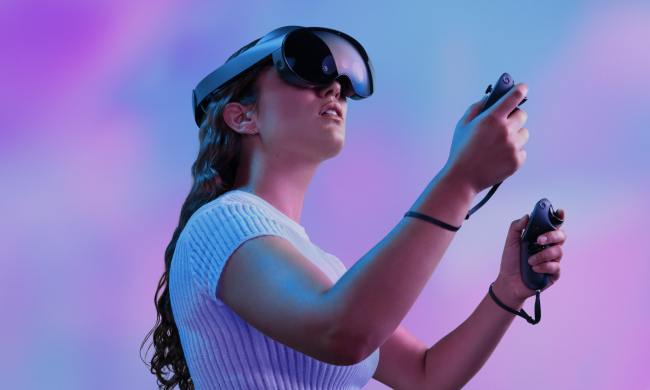Virtual reality may not be in mainstream films, but it’s already hitting the indie movie scene in a big way.
Last year, the Tribeca Film Institute proclaimed the Tribeca Film Festival (TFF) would be “the new home for the virtual reality revolution”; this year it opened up a new VR area at the show. Tribeca isn’t the first show to feature virtual reality, but it’s one of the most internationally renowned film festivals to feature it.
Movie theaters have been rolling out reclinable seats and 4DX theaters that spray wind and rain in order to increase the value of moviegoing in an age where home TVs now exceed 70 inches. The virtual reality experiences at TFF somewhat married that ideal of the tangible movie viewing experience being symbiotic with the movie itself. All of the virtual reality films on display were accompanied with some sort of physical installations inspired by the film.
“I think there’s a huge interest in augmented reality, artificial intelligence, and now secondary sensors integrated with VR.”
Each VR experience required free sign-ups, and from our experience, many of the films were raucous successes. Three hours after the start of the day, most of the VR films had hour-long wait times with some holding you back by three hours. The place was buzzing with a mixture of excited chatter and questions. All of the installations and VR experiences were in close proximity, leading to numerous moments where attendees in line for 2D films were drawn into the VR area.
The films on exhibit had themed areas. People sat in a boxed structure, its floor and walls covered in leaves, to view Oscar Raby’s audible VR experience The Turning Forest, about a magical forest. For The Guardian’s Francesca Panetta and Lindsay Poulton’s 6×9: An Immersive Experience Of Solitary Confinement, attendees sat on a bench in a white box while onlookers watched. Experiencing solitary confinement, headset wearers twitched and often adjusted in their seats as if to get more comfortable, even though they were simply sitting on a bench.
After Patrick, 34, watched 6×9 he told Digital Trends the commotion from the crowd prevented him from fully feeling as if he was in the silence of solitary confinement. He did say there was an emotional connection, however, and the environment of the 3D rendering differentiated VR from traditional films. “Whatever I tell you is my story, but you have your version,” Patrick said. “But if I put you in this VR experience, it’s more realistic.”
Some of the VR films were too ambitious for those in attendance. Sens was promoted as “the first project to adapt a graphic novel into a virtual reality,” and it took you through a maze of sorts. Jessica, 26, described it as “a bunch of white, black, and grey, which kind of makes you dizzy, but it’s fun.” She did say “the dot you’re supposed to navigate with is really small,” delaying her immersion into the experience — a hinderance VR filmmakers are still trying to figure out.
Opeyemi Olukemi, senior director of Interactive Programs at the Tribeca Film Institute, spoke with Digital Trends about the festival’s record-breaking crowds. Olukemi also hinted at what new technology next year’s festival could feature. “I don’t think there’ll just be VR next year,” she said. “I think there’s a huge interest in augmented reality, artificial intelligence, and now secondary sensors integrated with VR.”
If the Tribeca Film Festival and the long lines at each VR film are any indication, VR filmmaking may be closer to reality than we think.



